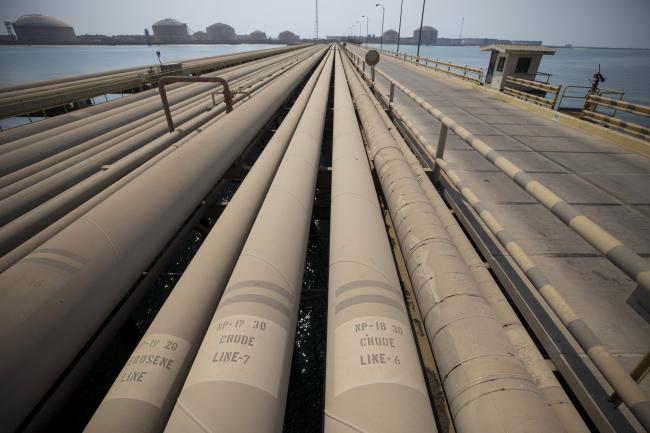(Bloomberg) -- OPEC’s surprise output reduction has wrong-footed short-sellers.
Hedge funds increased wagers against rising Brent crude prices for a 10th straight week in the period that ended last Tuesday and cut bullish bets on West Texas Intermediate oil to the lowest in almost six years. Then on Friday, OPEC and its allies surprised the market with a bigger-than-expected cut, leaving money managers to wonder if they’d made a costly error.
“Now that we’ve seen this fundamental shift in the market, I would expect there to be good support down at these prices levels and lead those newly established shorts to start covering,” said Ryan Fitzmaurice, an energy strategist at Rabobank.
On Monday at least, short-sellers didn’t seem to suffer for their pessimism. Brent futures fell 2.8 percent to $59.97 a barrel in London trading while WTI closed down 3.1 percent. Traders wondered how quickly Russia and other signatories to the deal would cut, while new spending plans from Hess Corp (NYSE:HES). and ConocoPhillips (NYSE:COP) underscored the resilience of U.S. production.
“It’s going to take the Russians quite some time to get their reductions done and U.S. production is still scheduled to rise," said Thomas Finlon, director at Energy Analytics Group Ltd. in Florida. “It doesn’t paint a helpful picture."
After much back-and-forth between producers in Vienna, OPEC and allies agreed to collectively cut production by 1.2 million barrels a day, with the cartel shouldering 800,000 barrels a day. Saudi Arabia had previously said a 1 million barrel-a-day cut was the likely scenario. The agreement will be reviewed in April.
Hedge funds’ net-long position -- the difference between bets on higher Brent prices and wagers on a drop -- declined 19 percent to 136,466 contracts, ICE (NYSE:ICE) Futures Europe data show for the week ended Dec 4. That’s the least bullish since August 2015. Longs slid 6.6 percent, while shorts jumped 14 percent to the highest since July 2017.
Net-long bets on WTI slid 17 percent, the U.S. Commodity Futures Trading Commission said on Monday. Long-only wagers were down 6.6 percent to the lowest level since March 2013, while bearish bets climbed 15 percent for the week.
After OPEC’s announcement, “people will start to be a little more comfortable deploying net-length into the sector,” said Chris Kettenmann, chief energy strategist at Macro Risk Advisors LLC. “OPEC has basically said, we’ve got you, we’re going to take down production.”
Ahead of OPEC’s deal, observers were also focusing on how tense the market has been. Implied volatility for second-month West Texas Intermediate futures hit a 2016 high late last month before slowly creeping lower.
Volatility at these levels is “untenable for not only market participants, but industry participants needing to deploy capex into next year,” said Kettenmann. “OPEC is doing what they should do, managing volatility to attract capital back to the sector.”
But, some remain skeptical that the deal is enough to make a dramatic change in the oil market.
“A fair question the market has to ask now is, will this be enough?” said Rob Haworth, who helps oversee about $151 billion at U.S. Bank Wealth Management in Seattle. “Are there enough signs that this $50-$55 price range is low enough to limit the growth of U.S. shale production so 1.2 million barrels is enough, and will it be enough in the face of what we see as a slowing global economic environment?”
(Updates with WTI wagers in the second, eighth paragraphs.)
